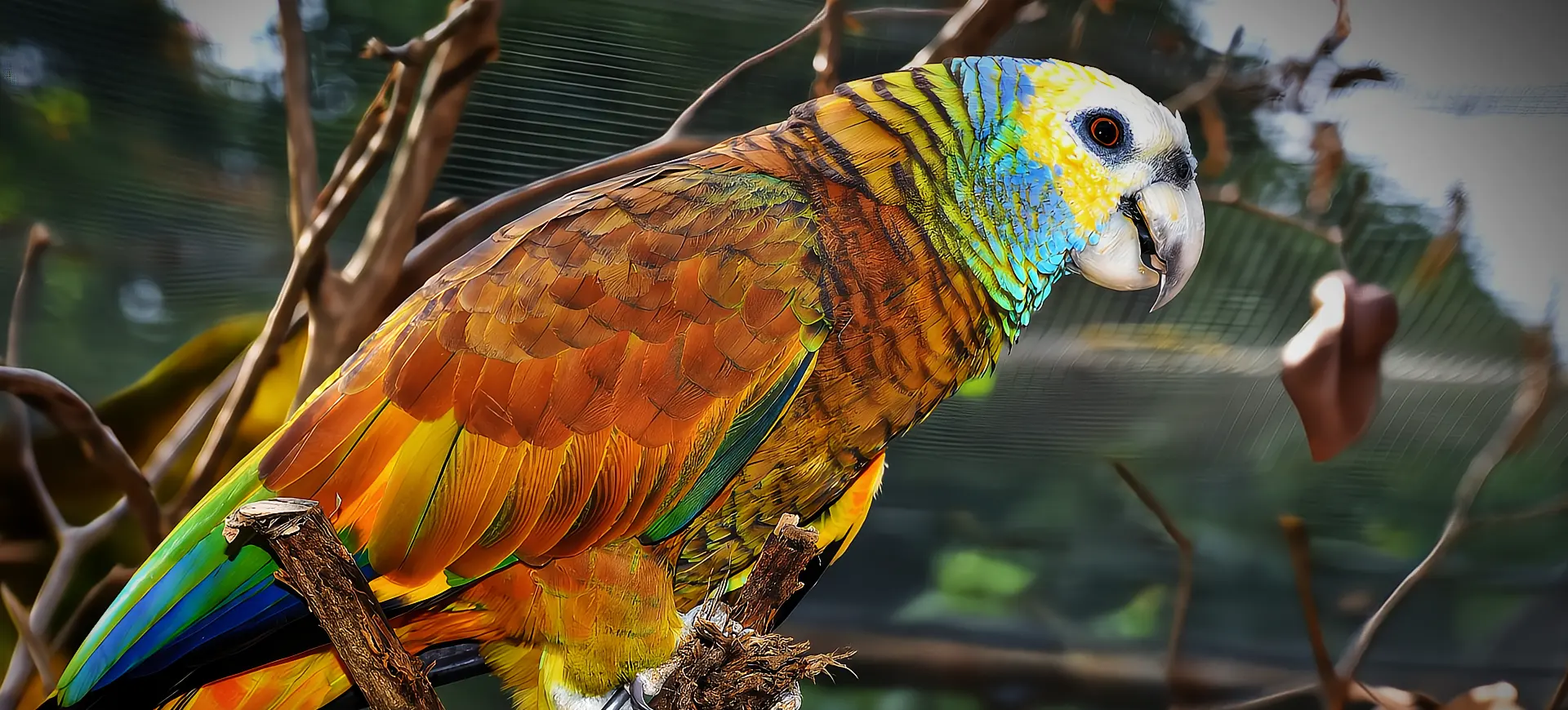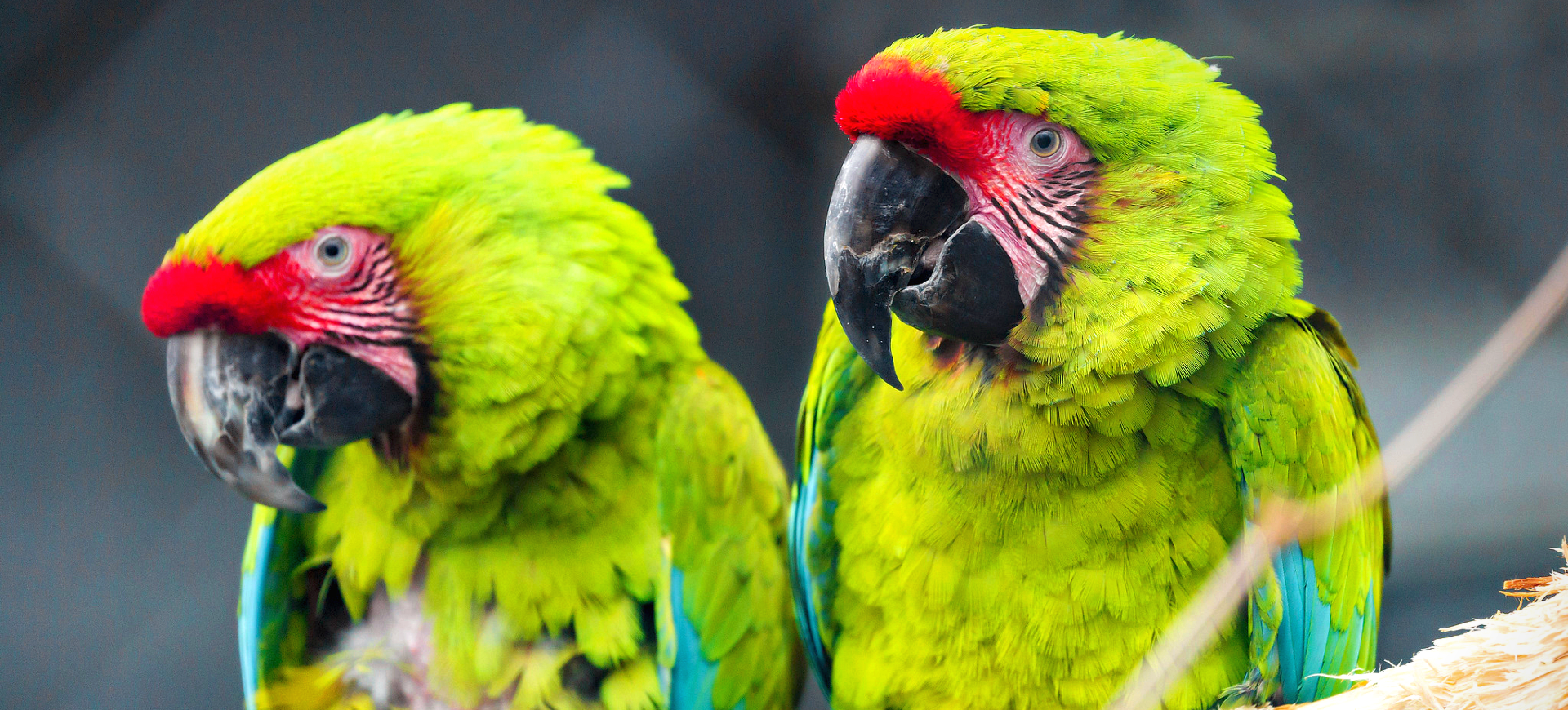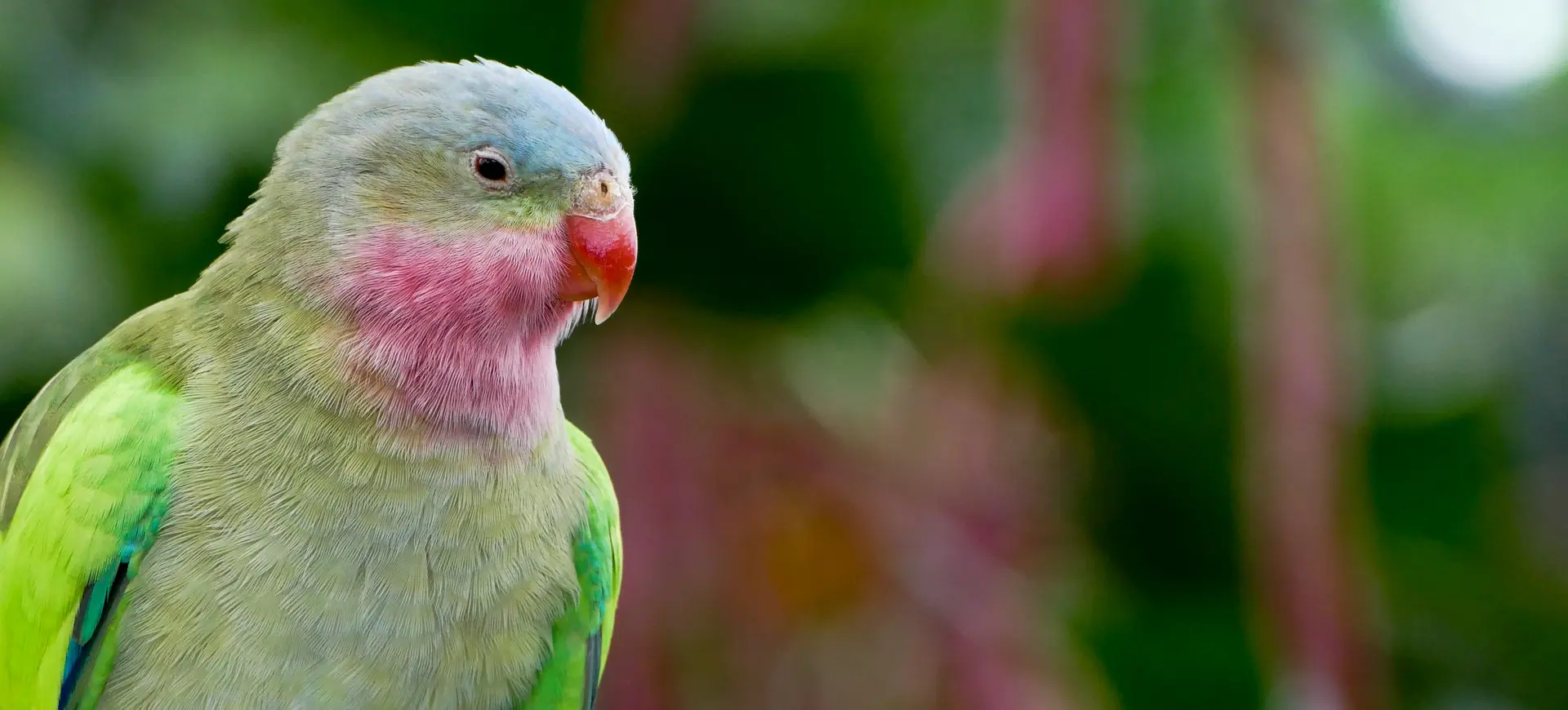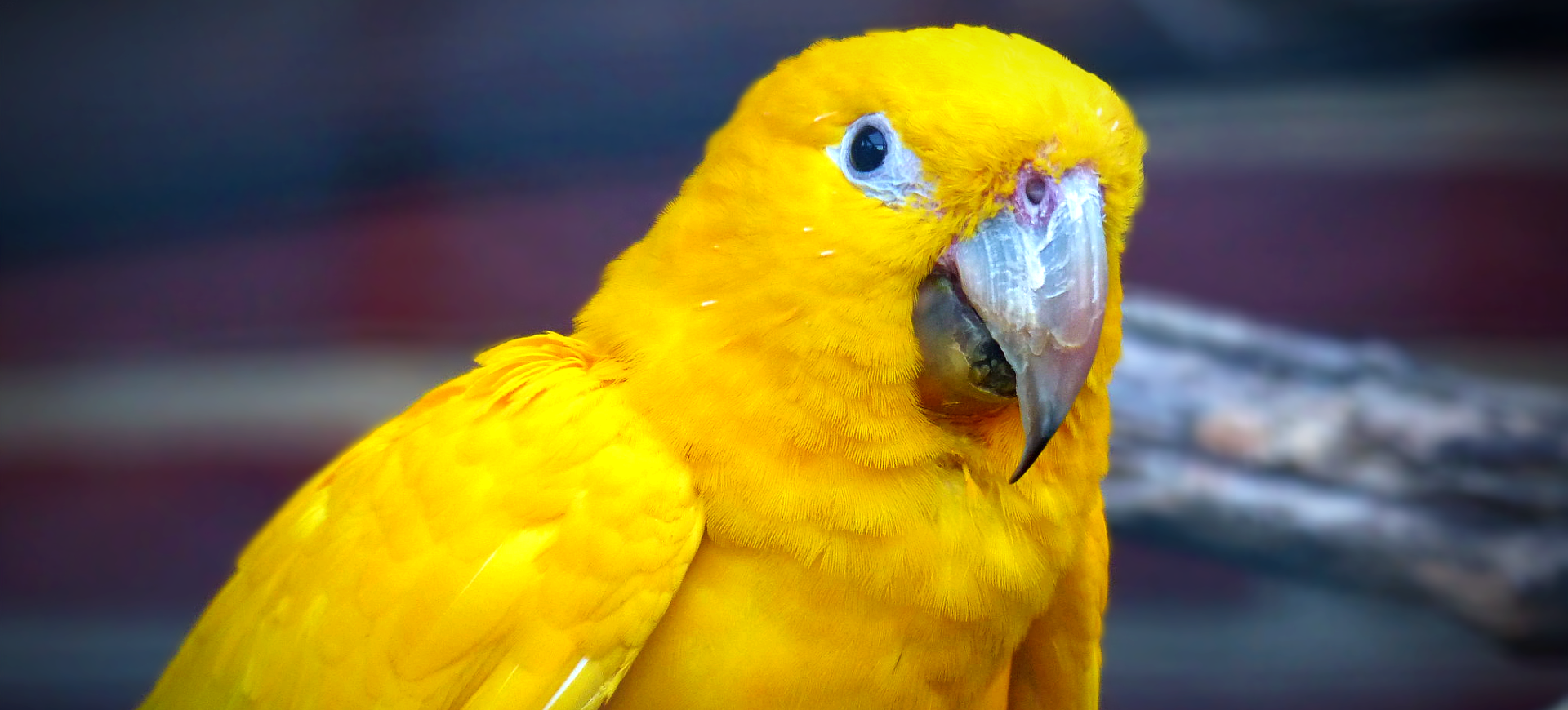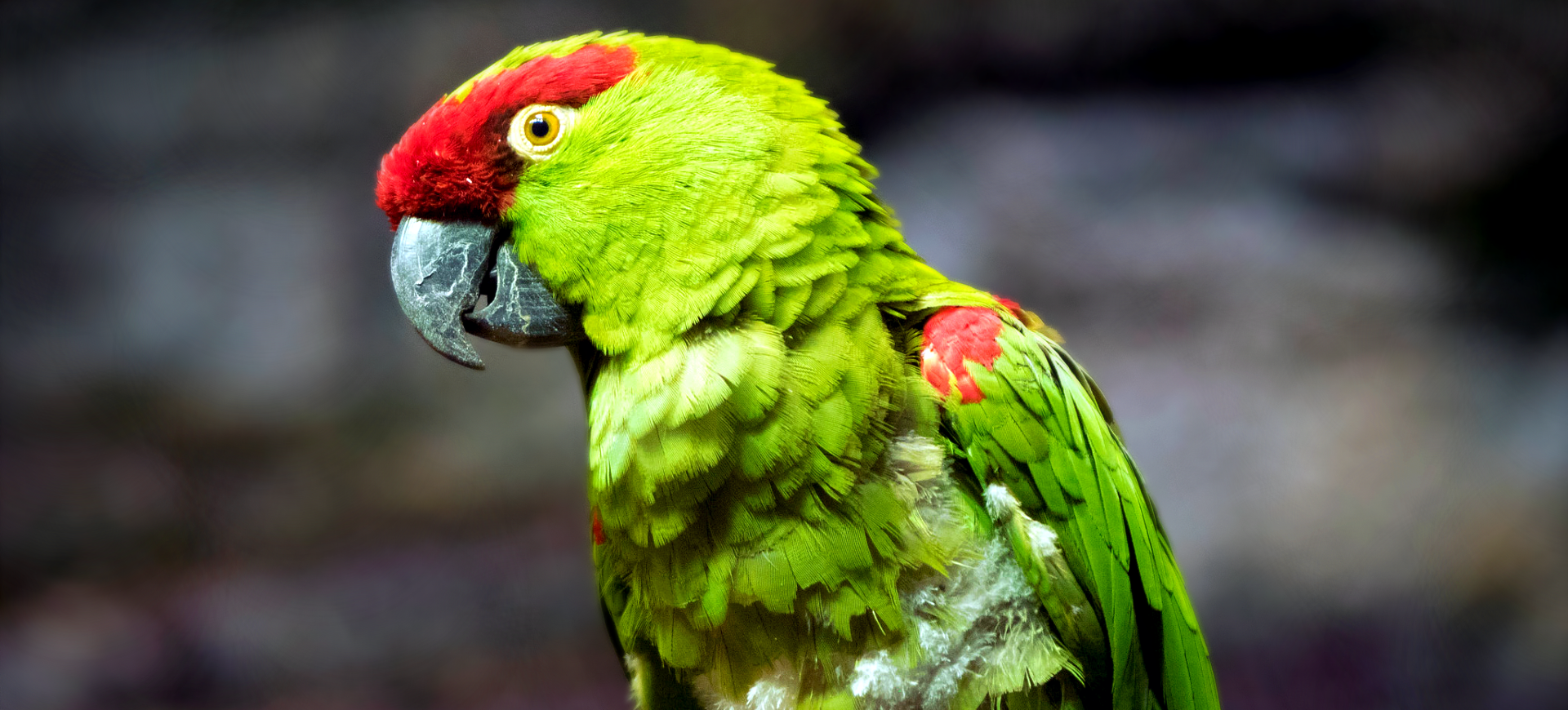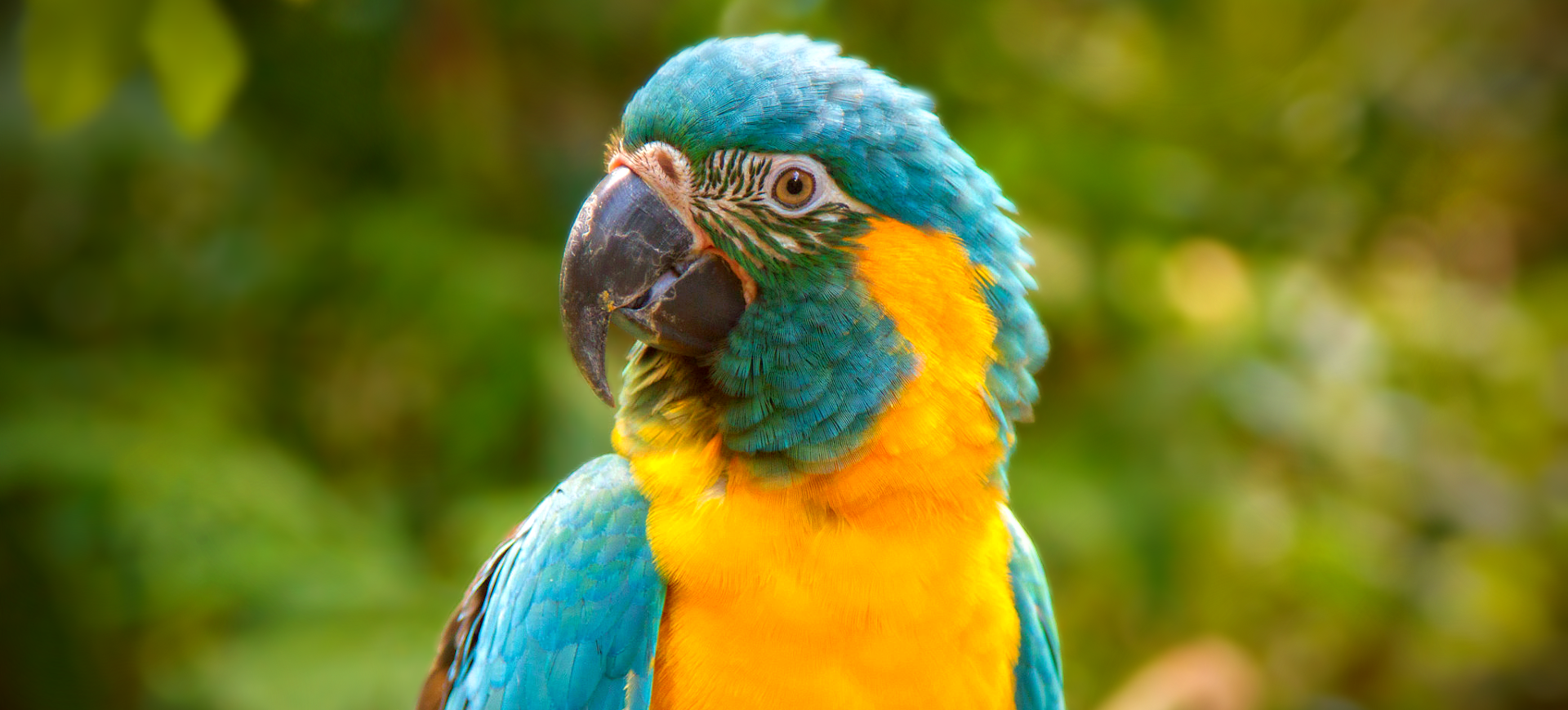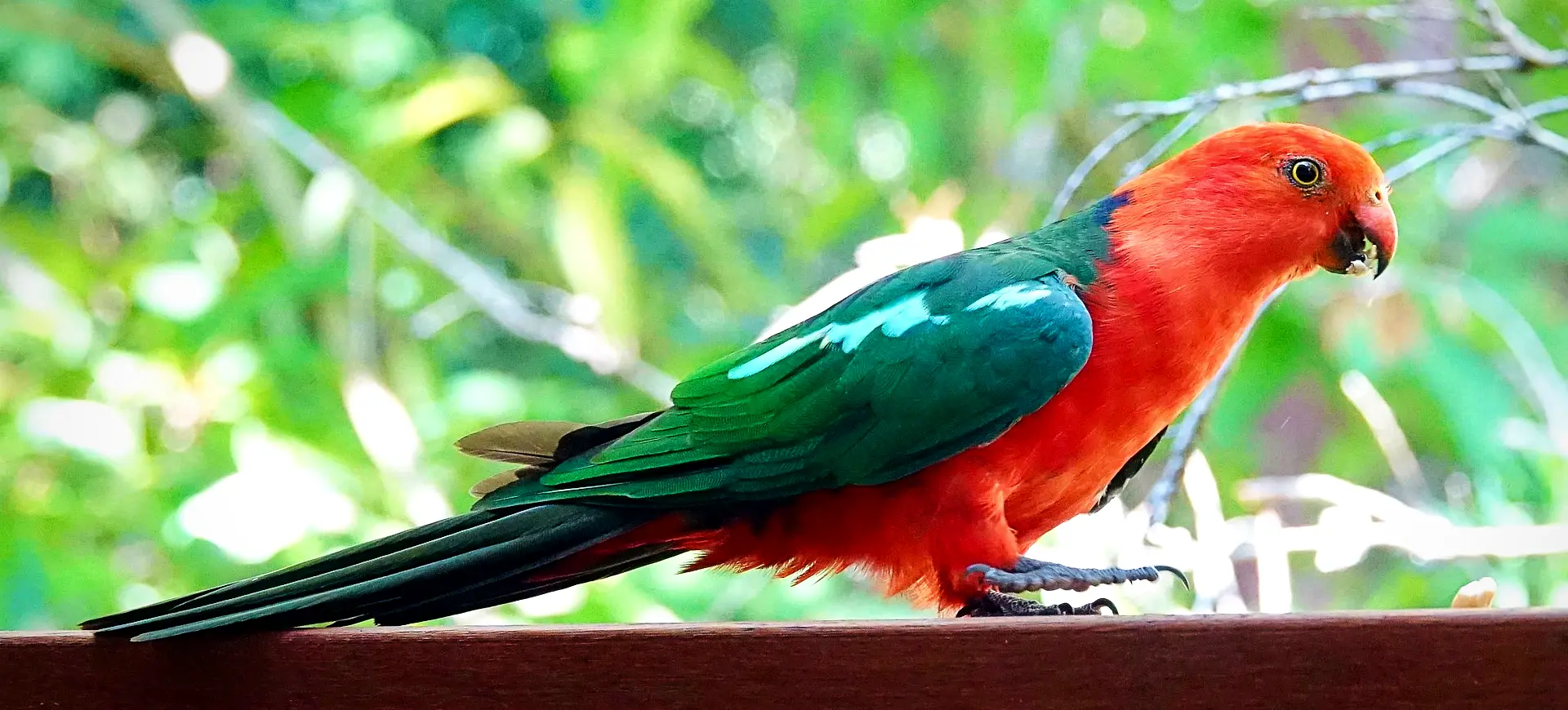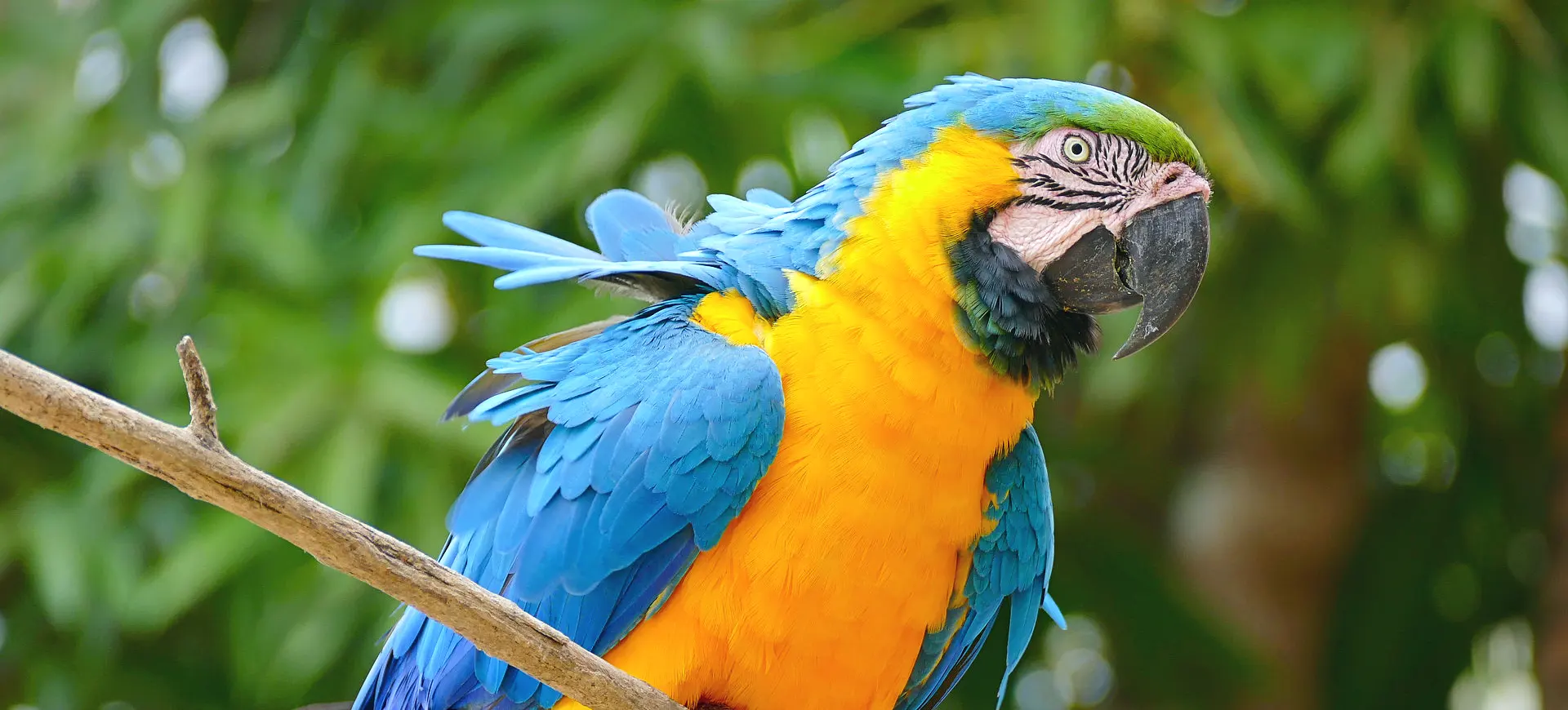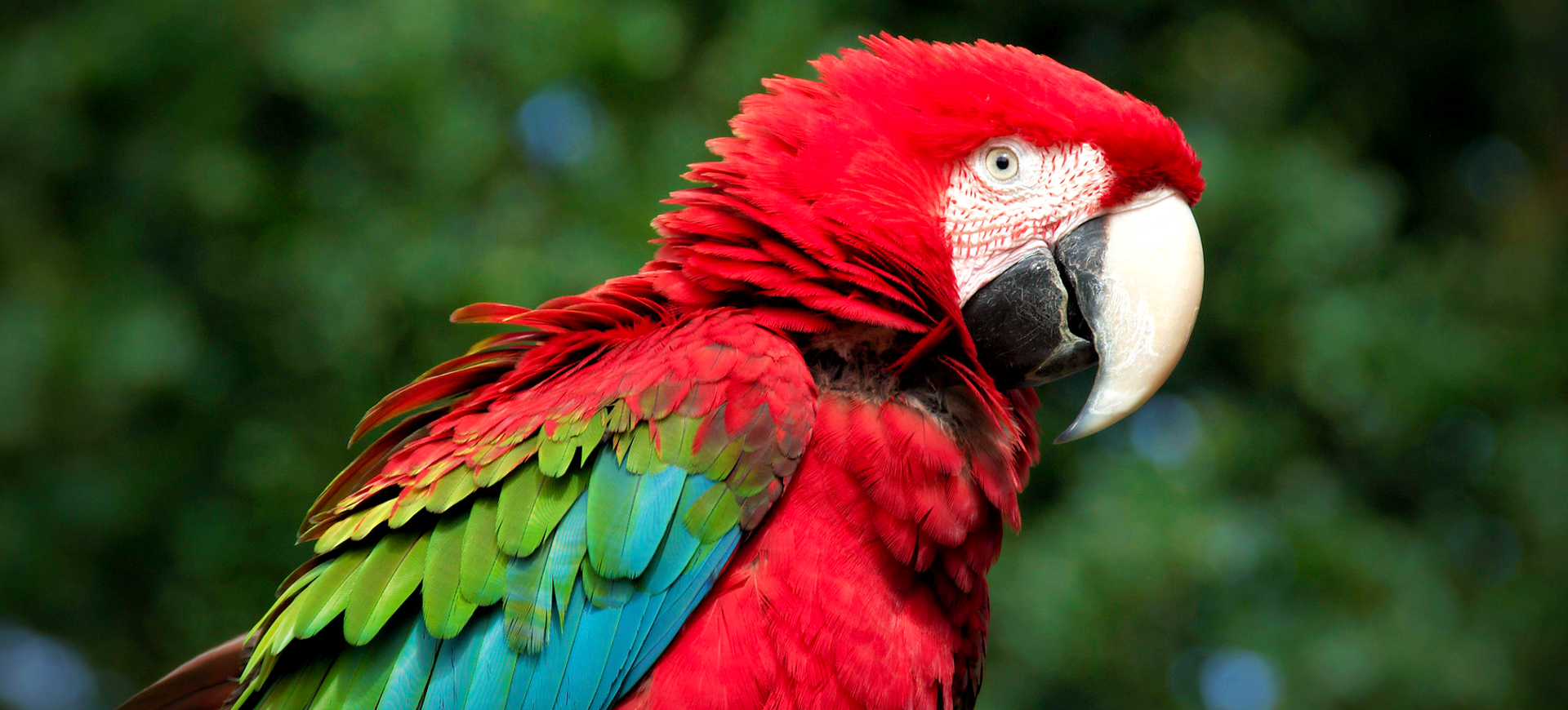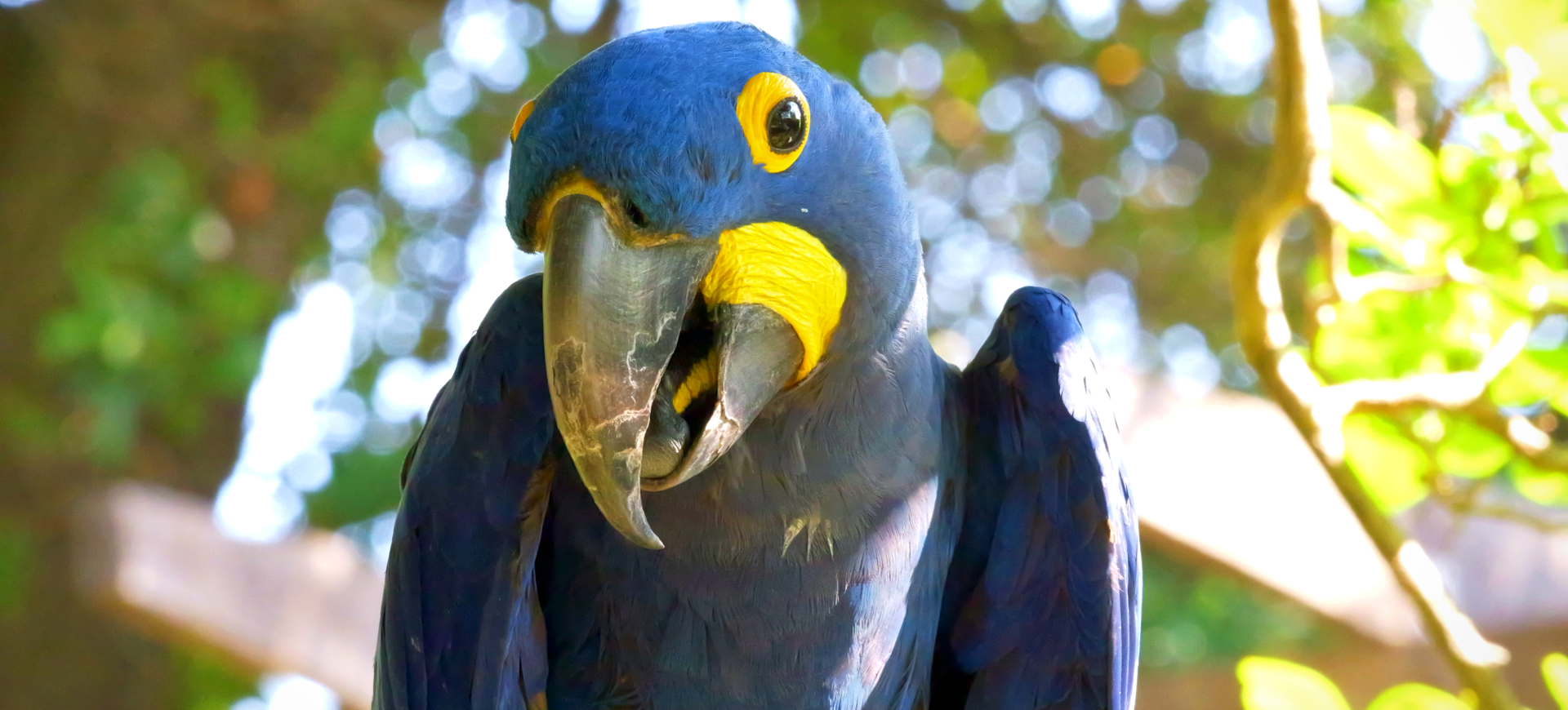Overview
The Military Macaw (Ara militaris) is a vibrant and charismatic bird recognized for its striking appearance and friendly nature. Its plumage primarily showcases a bright green color with vibrant blue feathers on the tail and wings and a red patch on the forehead. This medium-sized macaw measures about 70 centimeters in length, making it a noticeable presence in its habitat. Native to various environments in Central and South America, the Military Macaw thrives in humid and arid forests. They are known for their strong, loud calls, often heard echoing through their natural habitat, signaling their presence to others in the area.
These birds demonstrate high intelligence and social complexity, often seen in pairs or small groups. Military Macaws have been observed using their strong beaks to interact with various objects in the wild, showcasing their natural curiosity and problem-solving skills. Their diet consists predominantly of seeds, fruits, and nuts, which they skillfully extract using their beaks and tongues. The Military Macaw also plays a significant role in their ecosystem as seed dispersers, contributing to the health and diversity of their habitats.
In terms of behavior, Military Macaws are known for their strong pair bonds, often remaining with the same partner for life. They are also quite vocal, using a range of sounds to communicate with each other. These sounds vary from loud calls and squawks to softer, more musical tones when near their partner or offspring. This vocal communication plays a crucial role in maintaining social bonds and coordinating activities within the group.
Taxonomy
Kingdom
Phylum
Class
Order
Family
Genus
Species
Type
Physical Description:
The Military Macaw is distinguished by its predominantly green plumage, interspersed with bright blue and red patches. The bird’s forehead is adorned with a striking red patch, while the wings and tail feature brilliant blue feathers, contrasting the green. The bird’s beak is robust and black, designed for cracking open hard nuts and seeds, a staple of its diet. The feet are zygodactyl, with two toes facing forward and two backward, aiding in grasping and climbing.
These macaws have a robust and muscular build, adapted for a life of flying and foraging in the forests. Their eyes are expressive and surrounded by a white, featherless area, which can flush red when the bird is excited or agitated. The overall appearance of the Military Macaw is a testament to its adaptation to life in diverse environments, from the canopies of lush forests to more arid woodland areas.

Lifespan: Wild: ~50 Years || Captivity: ~70 Years

Weight: Male: 2.2-2.9 lbs (1-1.3 kg) || Female: 2-2.7 lbs (0.9-1.2 kg)

Length: Male & Female: 27-30 inches (70-76 cm)

Height: Male & Female: 12-14 inches (30-35 cm)

Wingspan: Male & Female: 40-41 inches (101-104 cm)

Top Speed: 40 mph (64 km/h)
Characteristic:
Native Habitat:
The native habitat of the Military Macaw encompasses a wide range of environments across Central and South America. These birds are typically found in humid lowland forests, as well as in more arid regions. They adapt well to various types of forests, including both deciduous and evergreen formations. Their habitat choice is influenced by the availability of food sources, particularly areas rich in the seeds and fruits that make up their diet.
Military Macaws are often seen in these habitats in the canopy layer, where they forage and socialize. They prefer areas with large, mature trees that provide both food and nesting opportunities. These birds also inhabit areas near cliffs, where they can find suitable nesting sites. The Military Macaw’s adaptability to different forest types is a key factor in its survival across various environmental conditions.
Biogeographical Realms:
Continents:
Diet:
Diet & Feeding Habits:
The Military Macaw’s diet primarily consists of various seeds, nuts, fruits, and occasionally flowers. In the wild, these birds are often seen foraging in the treetops, using their powerful beaks to crack open hard-shelled nuts and seeds. This foraging behavior nourishes the macaws and plays a vital role in seed dispersal, contributing to the health and diversity of their forest habitats.
In captivity, the diet of Military Macaws is supplemented with commercially available parrot food formulated to meet their nutritional needs. Fresh fruits and vegetables are also important in their diet, providing essential vitamins and minerals. Their health must have a balanced diet that mimics their natural feeding habits as closely as possible. This diet helps maintain their physical health and stimulates their natural foraging instincts, contributing to their overall well-being.
Mating Behavior:
Mating Description:
Military Macaws are monogamous birds, typically forming strong pair bonds that can last a lifetime. During the breeding season, these pairs engage in elaborate courtship displays, which include mutual preening, vocalizations, and aerial acrobatics. These behaviors strengthen the pair’s bond and are integral to their mating ritual.
The breeding season for Military Macaws varies depending on their geographical location but generally occurs during the dry season when food resources are abundant. Nesting typically occurs in cavities found in large trees or on cliff faces, providing a secure environment for their eggs and chicks. The female lays a clutch of 2-3 eggs, which she incubates for about 26-28 days. During this time, the male feeds the female and later assists in feeding the chicks once they hatch.
Reproduction Season:
Birth Type:
Pregnancy Duration:
Female Name:
Male Name:
Baby Name:
Social Structure Description:
Military Macaws are social birds, often seen in pairs or small groups. Their social interactions are complex, involving vocal communication and mutual grooming. These interactions are crucial in maintaining the group’s pair bonds and social cohesion.
They roost communally in large groups in the wild, especially outside the breeding season. These communal roosts provide safety in numbers and are important for social interaction. The structure of these groups can be fluid, with birds joining and leaving the group as they move between feeding and nesting sites.
Groups:
Conservation Status:
Population Trend:
The population of Military Macaws in the wild is currently under threat, primarily due to habitat loss and fragmentation, as well as illegal trapping for the pet trade. These factors have led to a decrease in their numbers in their natural habitat. They are rarely seen in many areas, indicating a significant decline in their population.
Efforts to monitor and protect these birds are ongoing, with conservationists focusing on habitat preservation and anti-poaching measures. In some regions, successful conservation programs have been implemented, involving local communities in protecting the macaws and their habitat. This community involvement is key to the species’ long-term survival, as it fosters a sense of stewardship and helps mitigate the threats they face in the wild.
Population Threats:
The primary threats to the Military Macaw population include habitat destruction, mainly due to deforestation for agricultural expansion and urban development. This habitat loss reduces the availability of food and nesting sites, which are essential for survival. Additionally, the illegal pet trade poses a significant threat, with many birds being captured and sold, which not only diminishes wild populations but also often results in poor conditions and high mortality rates for the captured birds.
Climate change is also emerging as a threat, as it can alter the ecosystems where these macaws live, affecting food availability and habitat conditions. Conservation efforts must address these threats holistically, focusing on habitat preservation, enforcing laws against illegal trade, and raising public awareness about the importance of protecting these magnificent birds and their environments.
Conservation Efforts:
Conservation efforts for the Military Macaw include habitat protection, restoration, and efforts to combat the illegal pet trade. Protected areas have been established in several countries within their range, providing safe havens for these birds. In addition, reforestation projects aim to restore critical habitats.
Education and awareness campaigns are also crucial. By informing local communities and potential buyers about the plight of the Military Macaw, these initiatives aim to reduce illegal trapping and trade. Conservation breeding programs in captivity also contribute to the species’ survival, though reintroduction efforts face challenges.
Additional Resources:
Fun Facts
- Military Macaws can mimic human speech and sounds.
- They use their strong beaks for eating and as a ‘third foot’ for climbing.
- These birds can fly at speeds up to 40 mph.
- Military Macaws have a strong social structure and complex communication.
- They play a vital role in their ecosystem as seed dispersers.
- The lifespan of a Military Macaw can exceed 60 years in the wild.
- They have a wide vocal range and can produce loud calls heard over long distances.
- Military Macaws are known for their playful behavior and intelligence.
- These birds form strong pair bonds, often lasting for life.
- They are considered a symbol of freedom in many cultures due to their majestic flight.









